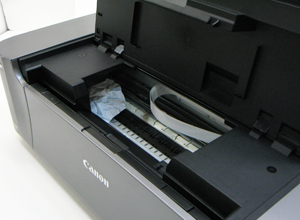The Impact of 3D Printing on Healthcare

Introduction
The intersection of technology and healthcare has given rise to transformative innovations, and 3D printing stands out as a revolutionary force. The capabilities of 3D printing, also known as additive manufacturing, are reshaping the landscape of healthcare. This article explores the profound impact of 3D printing on healthcare, from personalized medical devices to innovative surgical procedures.
Patient-Specific Implants
One of the groundbreaking applications of 3D printing in healthcare is the creation of patient-specific implants. Using medical imaging data, such as CT scans, 3D printing enables the fabrication of implants tailored to the anatomy of individual patients. This customization improves the fit and functionality of implants, leading to better outcomes in procedures like joint replacements and dental implants.
Prosthetics and Orthotics
3D printing has revolutionized the production of prosthetics and orthotics. The technology allows for the creation of lightweight, customizable, and cost-effective prosthetic limbs and orthopedic devices. This not only enhances the comfort and mobility of patients but also provides a more accessible solution, especially in resource-constrained environments.
Precision in Surgical Procedures
3D printing facilitates the creation of detailed anatomical models based on patient-specific data. Surgeons can use these models for pre-surgical planning, gaining insights into complex anatomies and practicing procedures before entering the operating room. This precision enhances the success rates of surgeries and reduces the risk of complications.
Medical Training and Education
In addition to surgical planning, 3D-printed anatomical models serve as valuable educational tools. Medical students, residents, and even experienced practitioners can use these models to enhance their understanding of complex anatomical structures and practice various surgical techniques in a risk-free environment.
Pharmaceutical Innovations
3D printing is extending its impact into the pharmaceutical realm by enabling the production of personalized medications. This involves creating drug formulations that match the specific needs of individual patients. The ability to tailor dosages and release profiles enhances the effectiveness of treatments while minimizing side effects.
Printed Drug Delivery Systems
Beyond personalized medications, 3D printing allows for the fabrication of intricate drug delivery systems. These systems can be designed to release medications in a controlled manner, improving patient compliance and therapeutic outcomes. The versatility of 3D printing enables the production of complex structures that traditional manufacturing methods cannot achieve.
Organ and Tissue Replacement
Perhaps one of the most groundbreaking applications is bioprinting, where 3D printers create living tissues and organs layer by layer. While still in its early stages, the potential of bioprinting is immense. It offers hope for patients in need of organ transplants, reducing the demand for donor organs and the risk of rejection.
Advancements in Regenerative Medicine
Bioprinting contributes to advancements in regenerative medicine by enabling the fabrication of tissues for transplantation and research. This technology opens new frontiers in studying diseases, testing new drugs, and developing therapies that harness the regenerative capacity of 3D-printed tissues.
Reduced Costs in Prototyping
In the realm of medical device development, 3D printing significantly reduces prototyping costs. Traditional methods often involve expensive molds and tools, whereas 3D printing allows for the rapid and cost-effective iteration of prototypes. This accelerates the development process, bringing innovative medical devices to market more efficiently.
Localized Manufacturing
The decentralized nature of 3D printing enables localized manufacturing of medical products. This is particularly beneficial in remote or underserved areas, where access to specialized medical equipment may be limited. 3D printing offers the potential to address healthcare disparities by providing on-demand, locally produced solutions.
Conclusion
The impact of 3D printing on healthcare is transformative, ushering in a new era of personalized and innovative solutions. From customized medical devices to bioprinted organs and tissues, the applications of 3D printing are expanding the possibilities within the medical field. As technology continues to advance, the integration of 3D printing is likely to redefine the way healthcare is delivered, making it more precise, accessible, and patient-centric. The marriage of technology and medicine through 3D printing represents not only a leap forward in innovation but also a promise of a healthier and more personalized future.


